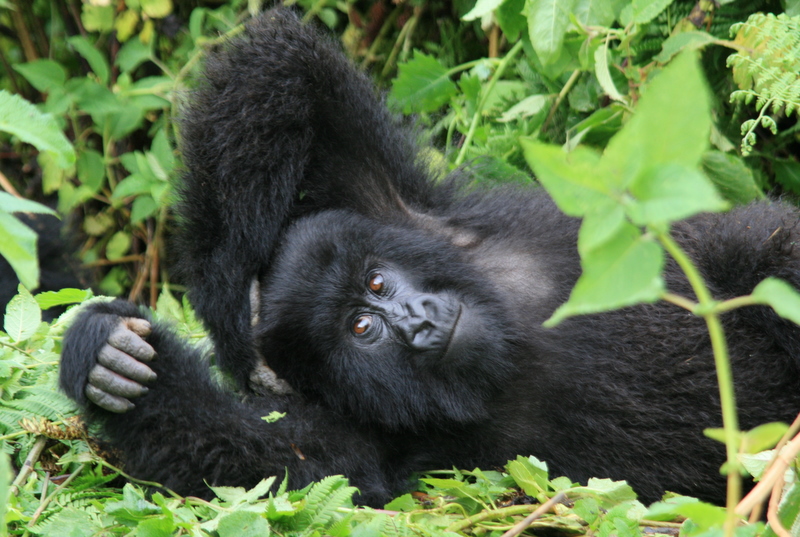How Many Gorillas Are Left in Africa? Gorillas are among Africa's most iconic and endangered…
Primate Safaris and Tours in Rwanda
Primate Safaris and Tours in Rwanda | Gorilla trekking tours in Rwanda | Budget Gorilla trekking safaris to Volcanoes National Park | Gorilla Permit booking
Rwanda primate safaris and tours – When it comes to primate safaris and tours in Rwanda, you will not be sorry that you chose Rwanda as your vacation destination.
Monumental Expeditions and Safaris is Rwanda’s leading adventure safari organisation, specialising in safari package organisation, gorilla permit purchases, housing, and other safari-related services.
Monumental Expeditions and Safaris also operates in South Africa, Botswana, Namibia, Zambia, Malawi, Mozambique, Mauritius, Seychelles, Uganda, Kenya, and Tanzania.
The Primates that can be spotted on Primate Safaris and Tours in Rwanda
Gorillas
Mountain gorillas are the most popular and visited primates in Rwanda’s Volcanoes National Park. Mountain gorillas are critically endangered owing to habitat degradation and local community pressure as demand for agricultural land has grown.
Over 300 mountain gorillas live in the 160-square-kilometer region, including 11 habituated mountain gorilla families and wild gorillas.
Chimpanzees
Chimpanzees are one of the most prominent sights in Nyungwe Forest, which is located in the famed Cyamudongo region, a 970 sq km large forest that borders Burundi’s Kabira Forest National Park.
Large armies have been sighted in the Cyamudongo area, but larger numbers have been recorded in the enormous Nyungwe forest, where habituation has been difficult because of the massive terrains and large home ranges.
Golden Monkeys
Golden monkeys are endangered and have a limited home range that includes Volcanoes National Park, Nyungwe Forest National Park, Gishwati Forest National Park, and Mgahinga National Park.
Black and white colobus monkeys
Black and white colobus monkeys have a larger home range and are typically amicable to populations; they may be spotted in smaller woods in Rwanda, and they are distinguished by their long tails and white long tails, as well as their ability to jump high.
The Red-Tailed Monkeys
The term “red-tailed monkey” refers to the red coloration of the underside of the tail, as well as the bi-coloration of the tail as the reddish colour grows from the base to the tip. The white nose and cheeks stand out against the black or dark grey body fur of these monkeys. Red-tailed monkeys also have unusually broad, elastic cheeks that they employ to grab food and store it safely in their mouths. Males are bigger than females in this species.
L’hoest monkeys
L’hoest monkeys are a wonderful sight. They have black fur with a reddish-brown saddle-shaped pattern on their back and a grey border. Their black face is bordered by white cheeks and necks. These guenons are distinguished by their long, white tail with a black tip. Males and females are extremely similar, but there is one notable difference: males have brilliant blue testicles. The more dominant the male, the brighter the hue. Furthermore, girls are smaller than men.
The Blue Monkey
Contrary to popular belief, the blue monkey is not blue. In reality, the species gets its name from its hairless face, which seems to be blue. Scientists are quite interested in this Old World monkey. The primate has a black top on his head. The body is mostly olive or grey in colour. Furthermore, the blue monkey has black and white patterns all over its body.
The potto monkey
The potto (Perodicticus potto) is a Lorisidae strepsirrhine monkey. Perodicticus is the only species in the genus. It’s also known as Bosman’s potto, after Willem Bosman, who first described it in 1704. It’s known as “softly-softly” in some English-speaking portions of Africa.
Galagos
Galagos, commonly known as bush babies or nagapies (meaning “night monkeys” in Afrikaans), are tiny nocturnal primates endemic to continental and sub-Saharan Africa. They are members of the family Galagidae (previously known as Galagonidae). They are regarded as Lorisidae’s sibling group.
Baboons
Baboons are classified into five species. They are all from Africa or Arabia. Baboons are among the world’s biggest monkeys, with males weighing anything from 33 to 82 pounds. Baboon bodies range in length from 20 to 40 inches, not counting significant tails of different lengths.
Vervet monkeys
These mostly ground-dwelling monkeys are commonly referred to as savannah monkeys since they are found in open terrain or woodland rather than rainforests. Some vervet monkeys have adapted to urban environments as well.
Owl-faced monkey
The owl-faced monkey, sometimes known as Hamlyn’s monkey, is a tropical rainforest monkey located east of the Congo basin. The owl-faced monkeys are greenish grey with black underparts and forelimbs and a silver-gray lower back and tail base. It is named from the white stripe that runs down the length of the snout, giving it an owl-like look, however, some individuals live at high altitudes, particularly in Mt. Kahuzi’s bamboo forest.
Dent’s monkeys
Gray-cheeked mangabey
The gray-cheeked mangabey ranges from eastern Nigeria to Uganda, with a gargoyle-like visage, sparsely haired grey or white cheeks, and scruffy hair on the crown. They often live in dispersed groups of several males and females, resting between feeding periods.
Angolan colobus monkey
These colorfully painted monkeys have long tails that help them balance as they run fast through the trees. They dwell in social groups of a single dominant male and many females and eat mostly on leaves in a range of forest types. To arrange Rwanda primate safaris and trips to visit mountain gorillas and golden monkeys, contact Monumental Expeditions and Safaris.


